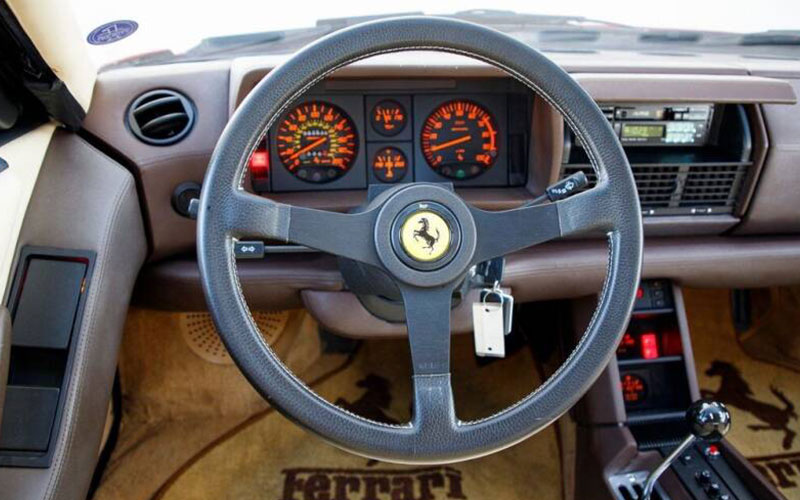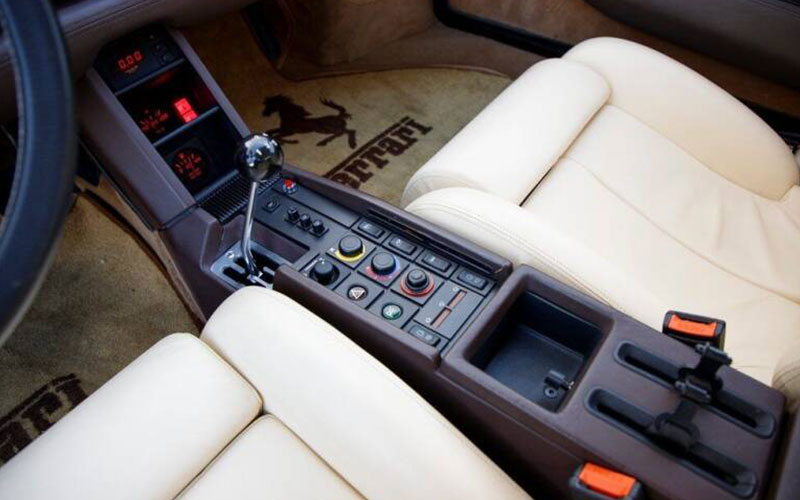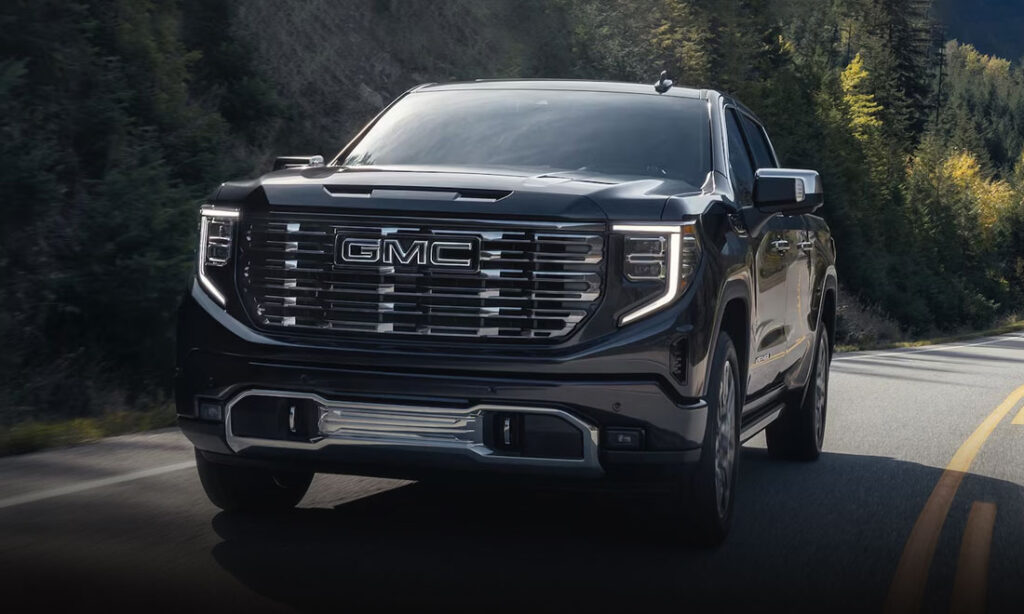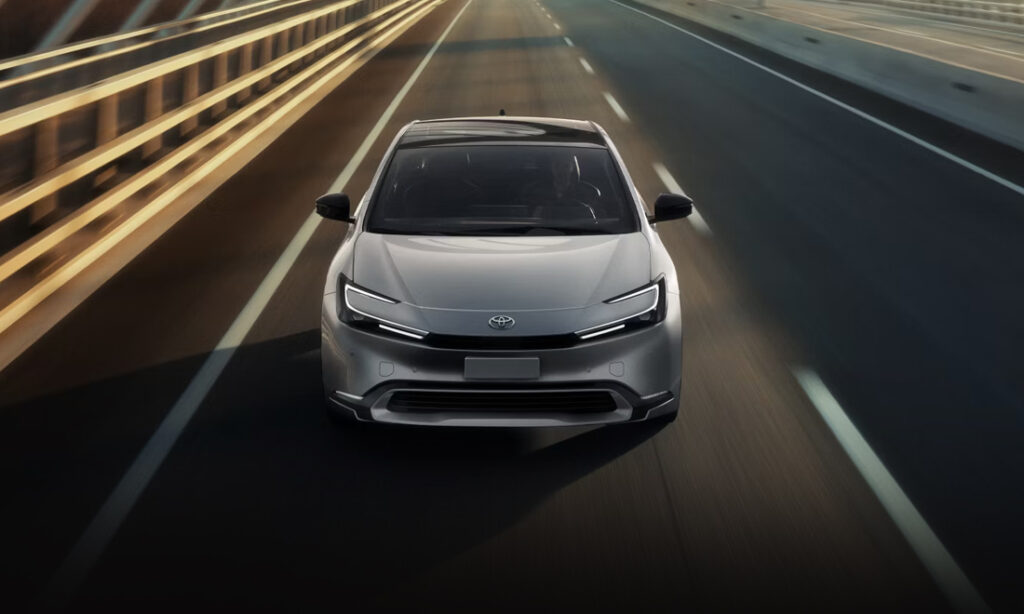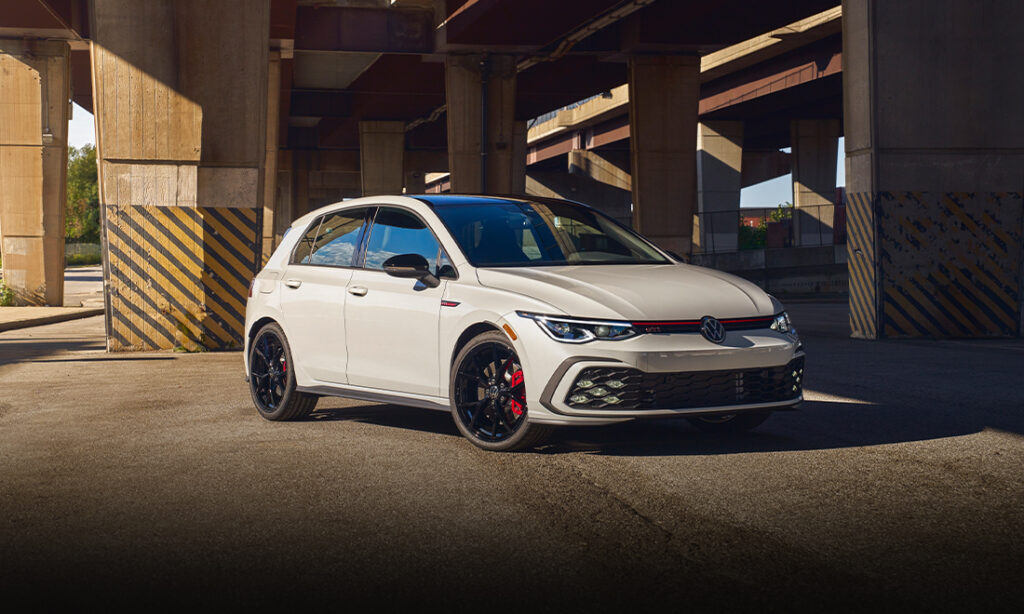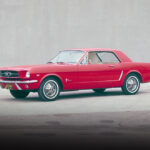Retro Review: Ferrari Testarossa
Nearly 40 years after its introduction, the Ferrari Testarossa is still considered one of the most important Ferraris ever.
The Quintessential Sports Car
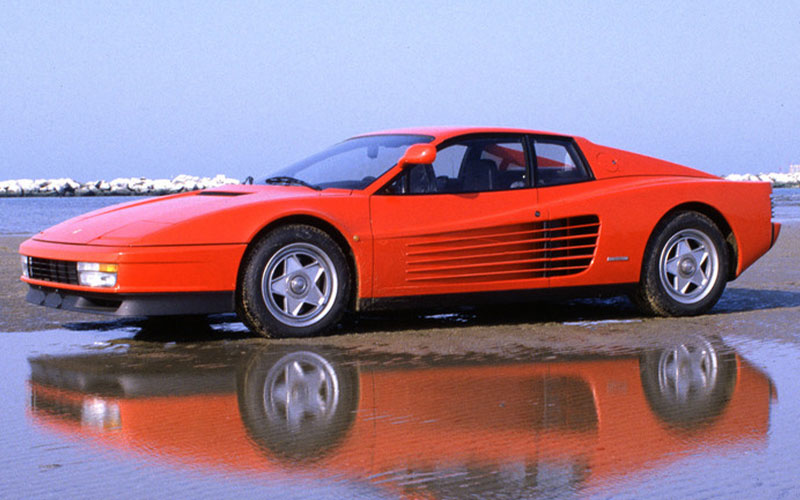
When asked to picture a classic exotic sports car, the Ferrari Testarossa is perhaps the one that comes to mind most quickly. Its flowing body lines and sickle-sharp door strakes are iconic even now, nearly 40 years after the car debuted at the Paris Auto Show. In fact, it’s this design and drivetrain that really was a turning point for the company.
After Lamborghini released the Countach, it became clear to Ferrari that they would have to depart from the softer styling of the Berlinetta Boxer when they created the Testarossa. To do so they employed the world-renowned design firm Pininfarina. The result was a truly innovative shape and a seriously fast sports car that fits into its incredible family quite well.
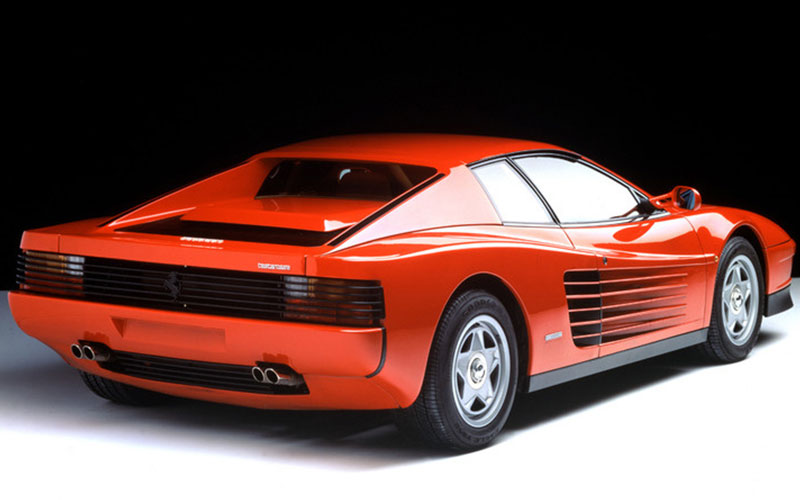
Those large air intakes on each side benefited the overall design in numerous ways. First, it reduced the piping needed to cool the engine, which had the additional benefit of keeping the cabin cooler and more spacious. In addition, due to their large size, the strakes were actually a required design element to abide by laws in numerous countries that outlawed such large openings. Finally, by adding the radiators to the rear of the car, the rear track had to be widened which produced better handling overall.
Ferrari Testarossa Specs
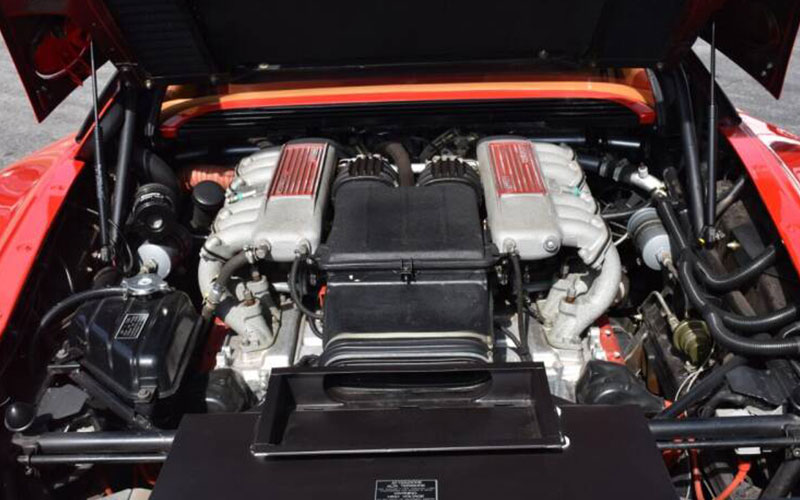
Much like the car it replaced, the Ferrari Berlinetta Boxer, the Testarossa used a 4.9-liter flat 12-cylinder engine. The biggest difference was that instead of using the same two-valve per cylinder format for the heads, Ferrari switched to red-painted cylinder heads that featured four valves per cylinder. In fact, these red cylinder heads contributed to the name “Testarossa” which literally means “Red Head” in Italian.
That additional breathing capacity allowed the Testarossa to build 385 horsepower that was routed to the rear wheels through a 5-speed manual transmission. Despite weighing some 3,700 pounds, the Testarossa could reach 60 mph in just 5.8 seconds and then onto a top speed of 180 mph.
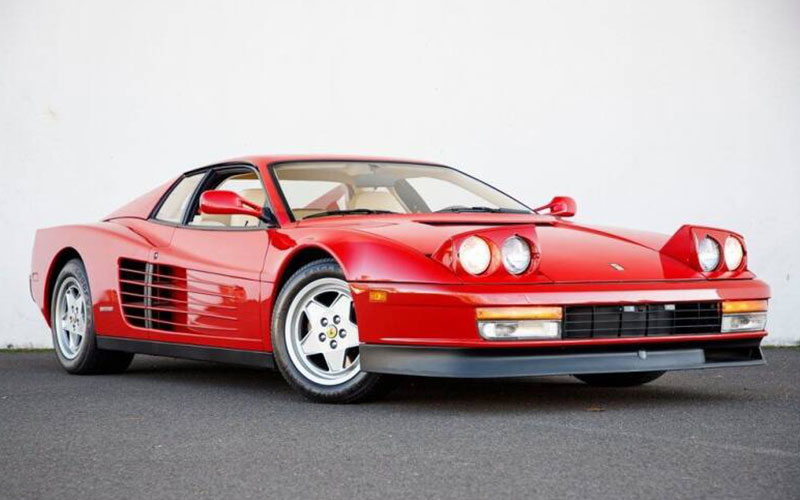
Originally, the Ferrari Testarossa cost buyers north of $170,000, and since then we’ve watched it go on a bit of a rollercoaster ride. In the early 2000’s it was easy to find a Testarossa for less than $60,000, but today they have rebounded. Rougher examples will cost a minimum of $80,000 while really nice cars will crest above $130,000.
The Eccentric Experience of the Testarossa
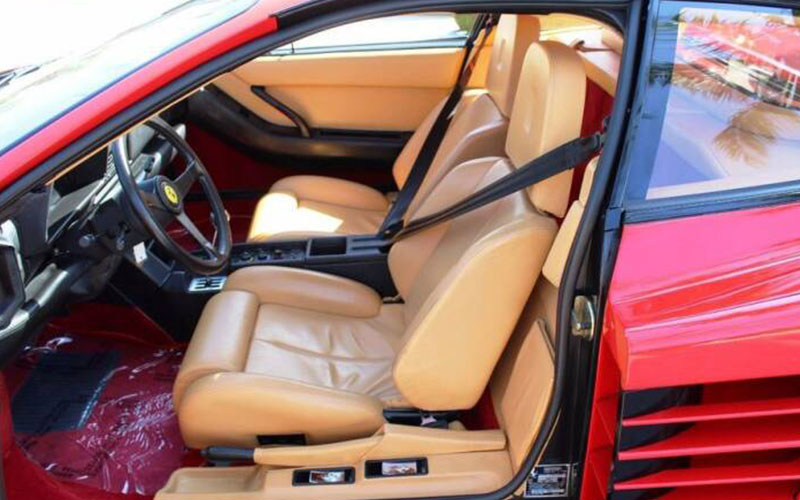
Slipping behind the wheel of a Ferrari Testarossa is a truly unique experience. First of all, the key bends. You read that right, it bends. Customers complained about hitting their knee of the key, so Ferrari added a hinge just after the shaft of the key so that after turning the car over, it could be bent out of the way. The oddities only continue from there. The door handle itself is hidden in the strake, so the first time you open the door requires a bit of exploration. Once in the actual seat, the upper part of the seat belt automatically positions itself, but you’ll have to be the one to reach down and connect the completely separate lap belt.
With the seatbelts fastened and the key turned over and bent out of the way, it still takes a few minutes to really drink in the cabin and controls of the Testarossa. The center control stack is so oddly laid out compared to a new car that it takes regular use to comprehend. That’s part of the charm though. Only after building a relationship with the Ferrari will you know which window button is which since they’re identical, unmarked, and positioned oddly. Only after time will you easily remember that there are lighting controls on the steering wheel stalk, in the center console, and above your head in the ceiling. And only after some more time driving the car will you become familiar with what the unmarked seat controls on the side actually do.
Those seats, by the way, are pretty comfortable and well-bolstered. Even tall people can fit in there without too much strain or struggle. There’s room behind the seats for some storage and there’s even more upfront under the hood. In terms of practical use and comfort, the Ferrari Testarossa doesn’t require you to completely compromise.
Driving This Red Head
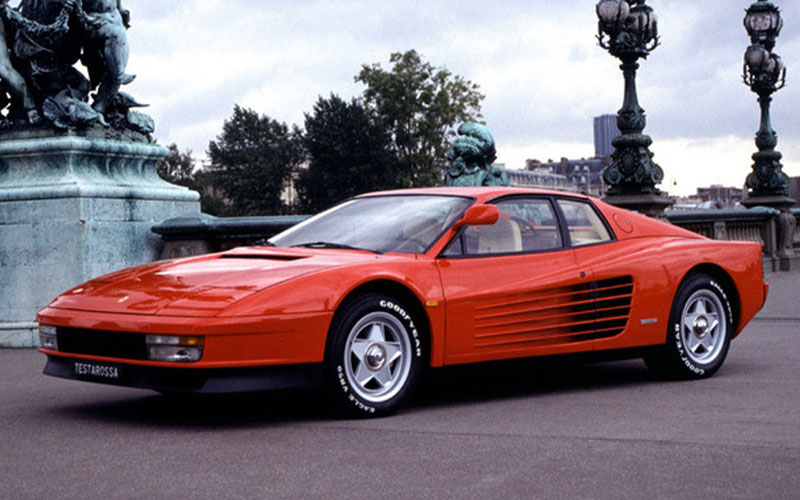
The familiarization starts to sink into your veins though as you pilot the car. Unlike modern cars, the steering is incredibly heavy and, frankly, unpleasant at low speeds. As things speed up though it feels much more enjoyable. The clutch is heavy as well, but a bit more livable. Perhaps the most special part of the Ferrari Testarossa driving experience is the relationship between you, the driver, and the drivetrain itself. Slotting the car into each gear with the gated manual transmission is a unique experience every gearhead should work to enjoy at least once. Yes, it’s a bit slower than a non-gated gearbox, but that extra millisecond is a worthy price to pay for the feeling as the lever slips into the notch so satisfyingly.
As you feed the flat 12-cylinder engine more air and fuel, the resulting sound and feeling of speed reminds us of a symphony. The crescendo of tempo and noise provides the kind of special encounter that feels so alien from the average car. Unlike most V12s, the flat configuration creates a totally unique exhaust note that doesn’t scream so much as it sings. It’s never raspy or rough. Speed is equally linear and smooth. Anywhere above 40 mph, the Testarossa is just so lovely to pilot. It’s predictable, nicely balanced (which is a bit surprising considering its 40/60 weight distribution), and engaging in all the best ways.
The Ferrari Testarossa Legacy
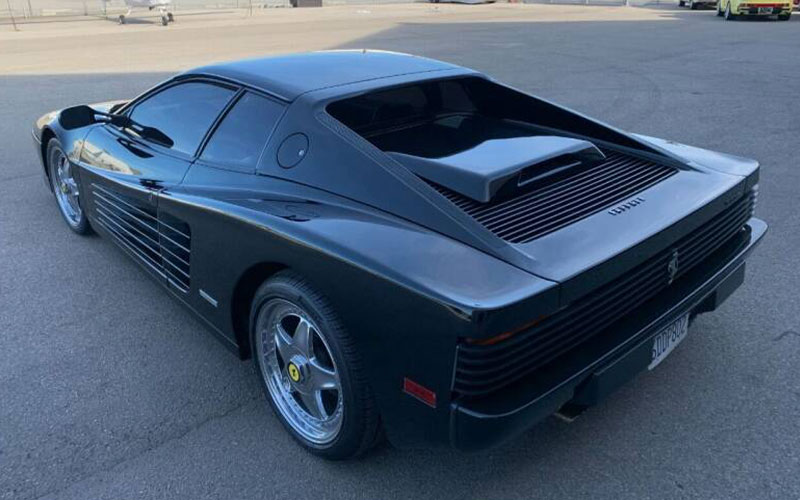
Really, this isn’t nearly as fast as any modern sports car and certainly nowhere close to the supercars we all know of. It doesn’t need to be though, because of everything else it provides. It has all the strange quirks that an Italian car should have. It has a proper 12-cylinder engine that sounds absolutely insane and it delivers power in a way that’s engaging and pleasurable. Its design is completely unique, well-loved, and will never be less than iconic. Today, so many supercars seem to be slightly different recipes of the same dish. The Ferrari Testarossa was the opposite of that idea. It turns heads everywhere it goes and makes its occupants feel as special as it is.


